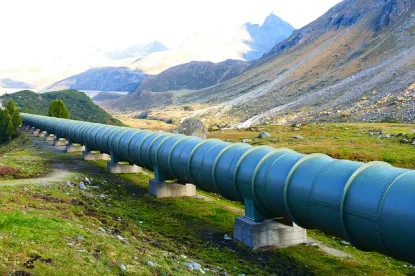New water supplies in the western United States are likely to come from a panoply of non-traditional sources, including storm water capture, waste water recycling, desalination, infrastructure efficiency improvements, and other conservation measures. One potential new water source for municipalities is contaminated groundwater requiring environmental remediation, that, but for its low quality, could be used as water supply. Exploring this option is especially appealing in water stressed regions, such as much of the western United States. For example, in southern California, the Metropolitan Water District supports “[r]ecovering degraded groundwater supplies for municipal use” as part of its Local Resources Program. The idea is to conduct environmental remediation of groundwater in a way that unlocks new unused water resources. In cases where contaminated groundwater is hydrologically separated from aquifers that are being beneficially used, a remedy that involves the extraction of water and treatment for later recharge into the principal water supply aquifer can actually increase the volume of water naturally available for human use.
Importantly, to unlock this potential additional supply requires a few noteworthy conditions. First, to make use of contaminated water the treatment infrastructure must be in place to recycle a steady stream of waste water. Usually this requires a local government body with access to enough capital to construct these expensive treatment systems. Second, a groundwater remedy must be selected that physically extracts water out of the ground so that it can be added to the principal water supply source. Therein lies one important obstacle to overcome—extraction methods such as pump and treat, or pump and discharge to a sewer, have fallen out of favor with environmental regulators in recent years.
Despite the water supply benefit of a cleanup remedy that physically pumps contaminated water out of the ground which can later be treated and recharged for storage in a production aquifer, from a purely environmental law perspective, US EPA has indicated a clear preference for in situ groundwater treatment remedies over the past few decades. In US EPA’s most recent Superfund Remedy Report, 51 percent of recent groundwater decision documents selected an in situ remedy, whereas “the selection of [pump and treat] in groundwater decision documents has decreased significantly since the early 1990s and has reached its lowest, 17 percent, in FY2014.”
The National Contingency Plan (NCP), which is a federal program designed to ensure US EPA properly oversees or cleans up contaminated sites, requires first and foremost in remedy selection, consideration of certain threshold criteria, including “overall protection of human health and the environment” and “compliance with ARARs.” For a variety of technical reasons, including the fact that they treat groundwater contaminants in place, and continue to operate if pumps or electricity to operate pumps fail, in situ remedies have become preferred under the NCP. Thus, under the NCP, the remedy selection process prioritizes completeness of remedy and compliance with ARARs primarily, not conservation of water. While the NCP does expect US EPA to “return useable ground waters to their beneficial uses wherever practicable,” this goal can of course be achieved by both in-situ and pump-and-treat remedies, and based on US EPA’s more recent remedy selections, perhaps best by in-situ.
The NCP is of course focused on environmental, not water-supply, goals. While environmental law applied in environmental litigation will require a remedy which best serves environmental goals, settlement permits selection of a remedy serving both environmental and water-supply goals. If groundwater has been returned to a quality that supports original beneficial uses through extraction and treatment out of the ground, then it is less expensive and more feasible for a water management agency to use than groundwater cleaned and left in the ground by an in situ remedy. From a water-supply perspective, after remediation, extracted and cleaned water is physically available for use and integration into the local water supply. This is a key incentive for local water managers have to try to influence environmental regulators to select pump and treat, perhaps the second best remedy from an environmental perspective but the best remedy from a water-supply perspective, over the often environmentally superior in-situ alternative.
In water-stressed areas, this is a compelling reason for local water districts to work collaboratively with environmental regulators and parties conducting cleanups in situations where pump and treat, although perhaps not the preferred remedy from a purely environmental standpoint, is a viable option that could help the local water-supply manager gain greater access to water. However, absent transparent communication of goals and early understanding of the water supply benefits of a pump and treat remedy, environmental regulators are likely to select the best environmental remedy, which is often an in situ cleanup according to US EPA.
There have been myriad lawsuits over groundwater contamination in the past few decades, many of which involve disputes over the quality, expediency, or type of remedy selected and implemented. The facts involved in these cases are complex, and the variety of claims can range from statutory environmental claims, to nuisance abatement, to common law claims for damages. In many of these lawsuits local water managers are a plaintiff. Early collaboration to select a remedy that provides water-supply as well as environmental benefits could yield better results for all interested parties. Achieving a successful positive-sum outcome from a literal mess will likely require careful consideration of both state water policies and environmental laws, and the potential outcome from working towards mutual goals will often be preferable to lengthy litigation for those affected.




 />i
/>i
